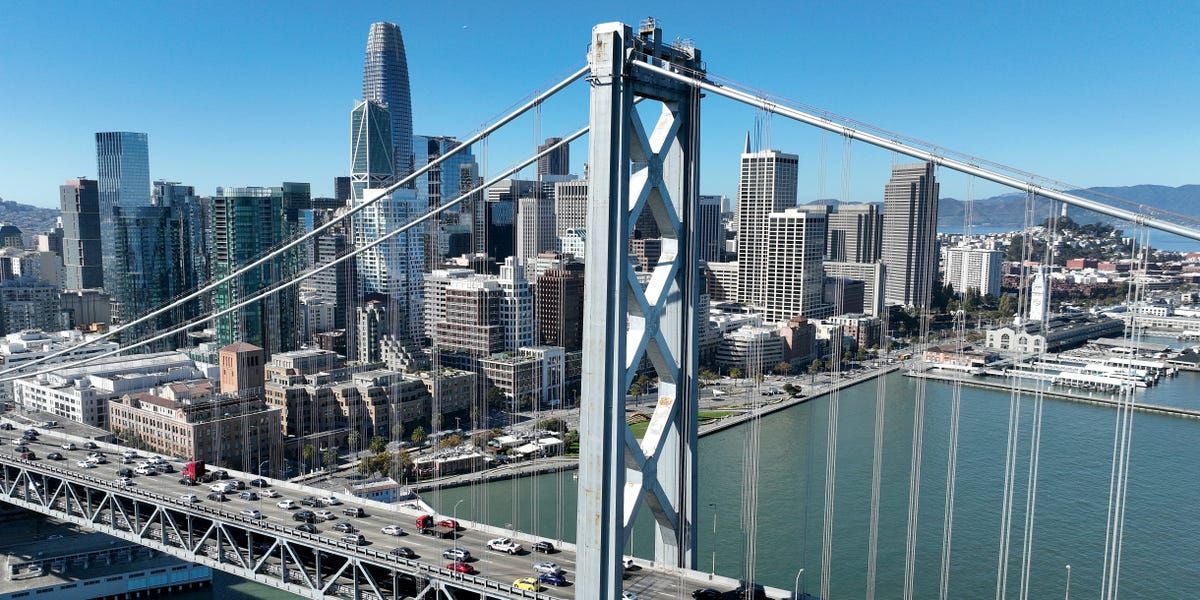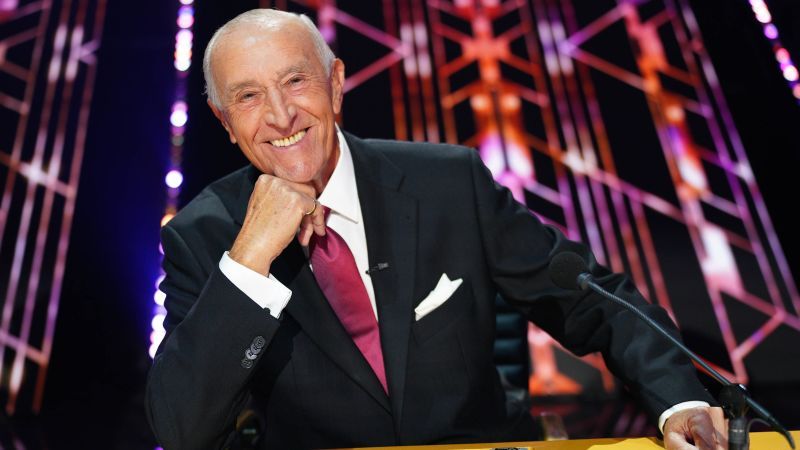San Francisco's Pain Worsens As Workers, Visitors, and Shoppers Leave
Commercial real-estate landlords are giving up on once trophy San Francisco properties.
A lack of hope among real-estate owners stems from office vacancies, but crime is also a factor.
Expect the downtown's downturn to worsen before it gets better, said Manus Clancy of Trepp.
Top editors give you the stories you want — delivered right to your inbox each weekday. Loading Something is loading. Thanks for signing up! Access your favorite topics in a personalized feed while you're on the go. download the app Email address By clicking ‘Sign up’, you agree to receive marketing emails from Insider as well as other partner offers and accept our Terms of Service and Privacy Policy
Downtown San Francisco's fall from grace is unfolding quickly.
Landlords large and small are waving the white flag over the increasing pressures facing the city, stemming in part from the downsizing of some of the largest employers and the inertia of remote work.
In May, foot traffic to San Francisco offices was down nearly 60% compared to 2019 — the largest deficit of the major US urban centers tracked by Placer.ai, and it shows. The city's 18 million square feet of empty office space is so vast that it could house 92,000 people, according to the San Francisco Chronicle.
Since April, the office tower at 350 California Street sold for an alarming 75% less than its estimated value before the pandemic. The owner of the flagship Hilton San Francisco Union Square and the nearby Parc 55 handed the keys to its creditors rather than try to make payments on a $725 million loan. Days later, Unibail-Rodamco-Westfield and coowner Brookfield gave the San Francisco City Centre back to their lenders after the exit of retailers left the mall just over half occupied.
The capitulation of some of real estate's most sophisticated players after tech job cuts and a growing permanence of remote work is a dark omen for the city's downtown. Real-estate defaults have been long expected, but not all at once: Many investors thought they'd trickle in as owners tap options to extend the maturities of their loans, which could kick their losses down the road.
What's more troublesome, the loss of workers, the business travelers they attracted, and the stores where they shopped is creating a vicious cycle that won't be disrupted any time soon, said Manus Clancy, a senior managing director at Trepp, which tracks corporate and commercial real-estate debt.
"San Francisco is in a sinkhole that's growing bigger by the day," Clancy, who is based in New York, told Insider. "Store closings, crime, and other quality-of-life issues are leading to an epidemic of negative headlines that are keeping tourists and workers away. It will probably get worse before it gets better."
A wave of downsizing by big tech companies including Snap, Meta, and Salesforce helped inflate the city's office vacancy rate to nearly 30% last quarter, up from less than 5% three years earlier, according to CBRE. The workers who are still employed have resisted their long commutes, which are common in the city that sits on a peninsula, Placer.ai data show.
Last quarter, just 36% of workers going to San Francisco offices were making commutes of more than 5 miles, the smallest percentage of long commuters making their way back to cubicles in Boston, Chicago, Houston, and New York, the data shows. But for workers living closer to their San Francisco offices, the percentage making a daily commute is relatively high.
The good side of vacancies: room for startups
Some of those workers are likely to belong to the explosion of generative-AI startups in San Francisco, with some 22% of them concentrated in the area. The founders of Krea, which creates models for high-grade image generation and asset-management services, last year packed their bags in Miami and headed to San Francisco's Hayes Valley neighborhood, which isn't far from Union Square and is turning into a haven for companies like theirs.
But with startups being small by nature, they're not offsetting the population drain. The flight from the city has reduced the population by more than 65,000 people from April 2020 to July 2022, according to the Census Bureau.
With housing demand down, median home prices inflated during the pandemic have dropped nearly 18% in the year through April, nearly triple the declines in Manhattan. As for rentals, the landlord Equity Residential has had "limited pricing power" in the downtown market and is making concessions to attract tenants, the company's chief operating officer said on an earnings call in April.
Jeff Burg, a real-estate investor who had been buying and renting out small apartment buildings since 2002, said he's given up on the city, citing burdensome regulation.
"I have unloaded all of my San Francisco rental properties in the past year and just moved my family out for good," Burg told Insider via LinkedIn. "After 23 years, we're moving on with our lives. Whatever is going on in San Francisco, we are not interested in being part of that any longer."
Fear of crime taints the city
Crime, or the fear of it, often creeps into conversations about San Francisco, too.
Thomas Baltimore, the CEO of Park Hotels & Resorts, which gave up the Union Square hotels last week, said in a statement that "street conditions" were adding to the burden of the properties, in addition to record-high office vacancies. Some neighborhoods — including the Tenderloin District, which is adjacent to Union Square and the Westfield Mall — have seen more homicides this year, though citywide, San Francisco's murder rate is near the bottom of major cities, according to ABC 7.
Crime hasn't seemed to stop tourists, with their numbers climbing 29% last year to 21.9 million and likely to reach 23.9 million this year, according to the San Francisco Travel Association.
Nonetheless, signs of crime in San Francisco are pervasive. The number of assault cases and robberies is up, even as rapes have declined, ABC 7 recently found. And social-media posts, including one from Elon Musk decrying "horrific" violent crime after the stabbing death of the tech executive Bob Lee in April, magnify the fear.
A rash of crimes became so pervasive at a Whole Foods market in the Mid-Market district — also near Union Square — that managers simply closed the location in April after opening last year. According to The New York Times, 568 emergency calls originated from the store over a 13-month period, many of them about violence and drug use.
One commercial real-estate broker who declined to be named told Insider that on a recent family trip to the city, his tour guide said that the Tenderloin had become so sketchy that policemen were paid more to walk the beat. People experiencing homelessness have long congregated in the Tenderloin neighborhood, while the number of unhoused people across the Bay Area has ballooned 35% since 2019 to 38,000, McKinsey & Co. found.
Frank Scavone, a veteran commercial real-estate-debt investor who is now managing partner of Third Point Real Estate Strategies, was reflective about why workers weren't coming back but more certain of the outcome — falling building values.
"I ask, what's the driver" of the San Francisco office vacancies, Scavone told Insider. "Is it that no one feels safe in downtown San Francisco? Is it because the ground-level merchants and the amenities associated with being downtown have evaporated because of crime?"
He continued: "Is it because downtown San Francisco is somewhat of a difficult commute from suburbs in Marin County or the East Bay?"
"Collectively these issues set the stage for workers saying, 'We don't want to be there because we don't feel safe, or it's no longer an enjoyable place to work, or because we feel we're entitled to a different workweek design,'" he said.
Source: Business Insider


